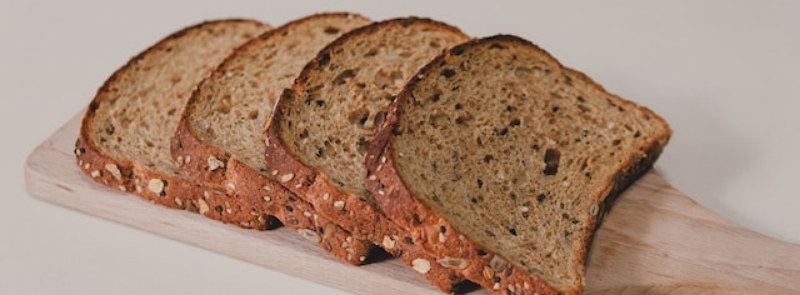
When It Occurs
Annually Every Month of September
Official Website
Timeline
Days Passed (804)
# Hashtags
#WholeGrainsMonth #WholeGrainsDiet
September is dedicated to Whole Grains Month, emphasizing the advantages and rich flavors of incorporating whole grains into a balanced diet.
Whole grains encompass the entirety of a plant seed, comprising three key parts:
Bran: This tough outer shell holds crucial minerals, antioxidants, and fiber, contributing to the grain's nutritional value.
Endosperm: Positioned as the middle layer, it houses the majority of the grain's carbohydrates.
Germ: Situated at the core, it provides essential vitamins, minerals, and protein necessary for a wholesome diet.
Origins and History
The history of Whole Grains Month is closely linked to the efforts of the Whole Grains Council:
- Initiation by the Whole Grains Council: The Whole Grains Council, a nonprofit consumer advocacy group, initiated Whole Grains Month to promote the consumption of whole grains. The council provides education, resources, and support to help people understand the importance of whole grains.
- Annual Observance: Since its inception, Whole Grains Month has been celebrated every September, coinciding with the back-to-school season and the beginning of fall, a time when people often seek to adopt healthier eating habits.
The Significance of Whole Grains
Whole grains hold special significance for several reasons:
- Nutritional Benefits: Whole grains are rich in essential nutrients, including fiber, vitamins, minerals, and antioxidants. They provide sustained energy and support overall health.
- Health Benefits: Consuming whole grains has been linked to numerous health benefits, such as reduced risk of heart disease, diabetes, obesity, and certain cancers. Whole grains also aid in digestive health and help maintain a healthy weight.
- Culinary Versatility: Whole grains are versatile and can be used in a variety of dishes, from breakfast cereals and breads to salads, soups, and main courses. They add texture, flavor, and nutritional value to meals.
Examples of Whole Grains
There are many types of whole grains that can be incorporated into a healthy diet:
- Brown Rice: A versatile grain that can be used as a base for various dishes.
- Quinoa: A nutrient-dense grain that is high in protein and can be used in salads, bowls, and side dishes.
- Oats: Commonly used in breakfast cereals and baking, oats are high in fiber and heart-healthy.
- Barley: Often used in soups and stews, barley adds a hearty texture and is rich in vitamins and minerals.
- Whole Wheat: Used in bread, pasta, and baked goods, whole wheat flour retains all parts of the grain.
- Farro: An ancient grain with a nutty flavor, often used in salads and soups.
- Bulgar: A quick-cooking grain made from cracked wheat, commonly used in Middle Eastern dishes like tabbouleh.
Ways to Celebrate Whole Grains Month
There are many enjoyable and beneficial ways to celebrate Whole Grains Month:
- Incorporate Whole Grains into Your Diet: Make a conscious effort to include more whole grains in your meals. Start your day with whole grain cereals, switch to whole grain bread, and experiment with different grains in your cooking.
- Try New Recipes: Explore new recipes that feature whole grains. Try making quinoa salads, farro risottos, or barley soups. The Whole Grains Council website offers a variety of recipes to inspire you.
- Educate Yourself and Others: Learn more about the benefits of whole grains and share this information with friends and family. Use social media to spread the word and share recipes and tips.
- Host a Whole Grains Potluck: Organize a potluck with friends or colleagues where everyone brings a dish made with whole grains. This is a fun way to try new dishes and discover creative ways to use whole grains.
- Visit Farmers’ Markets: Support local farmers by purchasing whole grains from farmers’ markets. Many markets offer a variety of grains that you might not find in regular grocery stores.
- Read Labels: When shopping, read food labels to identify whole grain products. Look for the Whole Grain Stamp, which indicates the product contains significant amounts of whole grains.
- Participate in Challenges: Join a whole grains challenge or campaign. The Whole Grains Council often organizes events and challenges during Whole Grains Month to encourage participation and engagement.
Fun Facts About Whole Grains
- Ancient Grains: Many whole grains, such as quinoa, farro, and amaranth, are considered "ancient grains" because they have remained largely unchanged for thousands of years.
- Whole Grain Stamp: The Whole Grains Council developed the Whole Grain Stamp, a packaging symbol that helps consumers identify products that contain significant amounts of whole grains.
- Dietary Guidelines: The Dietary Guidelines for Americans recommend that at least half of the grains consumed should be whole grains.
Health Benefits of Whole Grains
Incorporating whole grains into your diet can lead to numerous health benefits:
- Heart Health: Whole grains can help reduce the risk of heart disease by lowering cholesterol levels and improving blood pressure.
- Digestive Health: The high fiber content in whole grains supports healthy digestion and helps prevent constipation.
- Weight Management: Whole grains can help with weight management by promoting satiety and reducing overall calorie intake.
- Diabetes Prevention: Whole grains can help regulate blood sugar levels and reduce the risk of type 2 diabetes.
Conclusion
Whole Grains Month is a celebration of the health benefits and culinary versatility of whole grains. Whether you’re incorporating whole grains into your diet, trying new recipes, or educating others about their benefits, this month provides the perfect opportunity to embrace healthier eating habits. During September, take the time to explore the variety of whole grains available and enjoy the positive impact they can have on your health and well-being.


